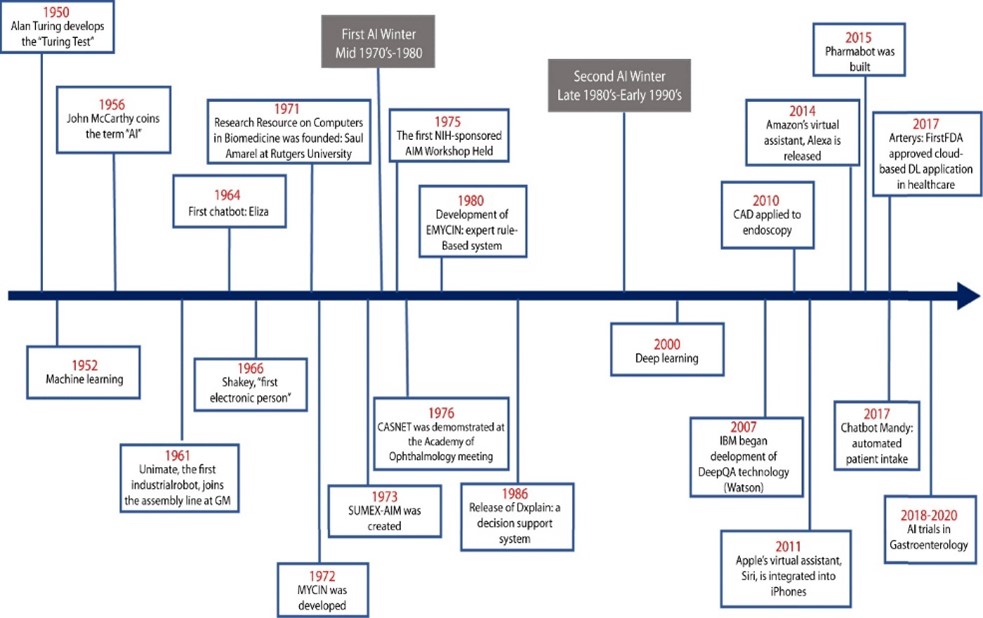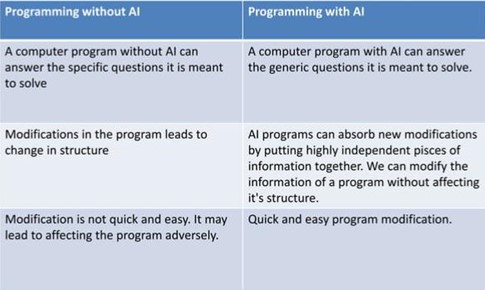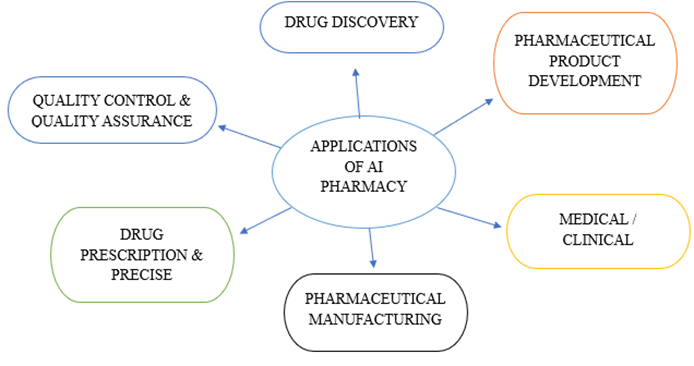Abstract
AI in pharmacy practices has the potential to revolutionize all aspects of pharmaceutical research as well as to improve the clinical application of pharmaceuticals to prevent, treat, or cure disease. AI, a technology that enables machines to simulate human intelligence, has found applications in pharmaceutical research, drug manufacturing, drug delivery systems, clinical trial optimisation, treatment plans, and patient-centred services. The Fourth Industrial Revolution in Health Sector implement artificial technologies to performed functions by machines and small robotic systems programmed to do human-like tasks result great potential to transform drug discovery by accelerating the research and development timeline. This technology is being adopted by many pharmaceutical companies to help with the drug discovery and development process, which will enable them to work on a variety of research-oriented projects to improve health facilities and easily cure the diseases in the future. This review paper examines the Dual impact of artificial intelligence (AI) in the pharmaceutical sector, analysing its Potential bene fits and associated Challenges. AI technologies, including Machine learning, data analytics, and Natural language processing, have Revolutionized drug discovery, clinical trials Optimization, personalized medicine, and Drug safety monitoring. However, concerns Regarding data privacy, bias, regulatory Compliance, and job displacement Necessitate a comprehensive evaluation of Al’s role in healthcare, this review critically Assesses the utility of Al in pharma while Addressing ethical, regulatory, and socioeconomic implications.
Keywords
Artificial Intelligence, Machine Learning, Drug Safety, Drug Development, Pharma Industry, Industry Transformation, Deep Learning.
Introduction
Artificial Intelligence (AI) is the branch of Engineering science which deals with creation of intelligent machines, particularly intelligent computer programs. It is an advanced version of computer Aided technique that consists of collecting the information from various sources, then preparing rules accordingly to be followed for handling the required information, and drawing possible outcomes to determine appropriate results and processes can resemble the human behaviour. Artificial intelligence and machine learning have been playing a significant role in the pharmaceutical industry and consumer. healthcare business. AI has come a long way in healthcare, having played significant roles in data and information storage and management – such as patient medical histories, medicine stocks, sale records, and so on; automated machines; software and computer applications like diagnostic tools such as MRI radiation technology, CT diagnosis and many more have all been created to Aid and simplify healthcare measures. During the past few years, a considerable amount of increasing interest in the uses of AI technology has been identified for analysing as well as interpreting some important fields of pharmacy like drug discovery, dosage form designing, polypharmacology, and hospital pharmacy. AI technology is exercised to perform more accurate analyses as well as to attain useful interpretation. Reflecting on the past 25 years, pharmacy has done a great job of addressing the growing demand for prescriptions, even when faced with pharmacist shortages, growing operating costs, and lower reimbursements. Pharmacy has also done a great job of leveraging enabling technology automation to improve workflow efficiency and lower operating costs while promoting safety, accuracy, and efficiency in every pharmacy setting. AI is expeditiously penetrating the field of the healthcare sector and has a huge impact on clinical decision making, disease diagnosis, and automation. The main objective of this artificial intelligence to identify useful information processing problems and give an abstract account of how to solve them. Artificial intelligence in Pharma refers to the use of automated algorithms to perform tasks which traditionally rely on human intelligence. Over the last five years, the use of artificial intelligence in the pharma and biotech industry has redefined how scientists develop new drugs, tackle disease, and more. Technologies such as network pharmacology, RNA-sequencing (RNA-seq), high-throughput screening (HTS), or virtual screening (VS) have all accelerated the discovery of new targets, as well as new drugs to some extent. Nevertheless, these technologies have rarely been significant contributors to the current process of new drug discovery. Thus, there is an urgent need for new technology to drive the development of new drugs. AI techniques in this context mainly involve machine learning (ML) and deep learning (DL). Both ML and DL algorithms are involved in target discovery and validation, drug discovery and design, and preclinical drug research, where they are used to analyse different data characteristics in different formats. After a drug candidate is enrolled in a clinical trial, DL plays a pivotal role in assisting in the design of the clinical trial and in supervising and analysing data from the clinical phase IV. In simple terms, AI refers to ability of machines and computers to think, act, behave and function as human beings. Familiar examples of AI-controlled systems include Apple’s SIRI (in iPhone), Amazon’s Alexa, and the self-driving cars of Google, Mercedes, BMW, and Tesla to name a few. The core of AI can be Knowledge Engineering, in which machines are assembled with access to abundant data and information relating to the human world, which enables them to be able to mimic human behaviour. Machine Learning is another type of AI, which involves the use of algorithms and statistical models to improve the accuracy of software applications in predicting outcomes without being distinctly programmed. It was established based on the idea that machines can learn from data, identify problems and make decisions with minimum human help or intervention. Applications of machine learning include self-driven Google cars, fraud detection, and online recommendation offers like those on Amazon and Netflix. Machine perception is another aspect of AI and it involves designing and building machines with the ability to use sensory inputs to deduce information about the different aspects of the world. Computer vision is the ability of machines to process visual inputs such as facial information, objects, and gestures.
History of AI in pharmacy

Figure 1: Timeline of the development and use of artificial intelligence in medicine. AI, Artificial intelligence; DL, deep learning; FDA, U.S. Food and Drug Administration; CAD, computer-Aided diagnosis.
Maturation of AI (1943-1952)
The first work which is now recognized as AI was done by Warren McCulloch and Walter pits in 1943.They proposed model of artificial neurons.
Donald Hebb demonstrate an updating rule for modifying the connection strength between neurons. His rule is now called Hebbian learning.
The Alan Turing who was an English mathematician and pioneered machine learning in 1950. Alan Turing publishes “Computing machinery and intelligence “In which he proposed at a test. The test can check the machine ability to exhibit intelligent behaviour equivalent to human intelligence, called a Turing test.
The birth of AI (1952-1956)
An Allen Newell and Herbert A. Simon created the first artificial intelligence program which was named as “Logic theorist”. This program had proved 38 of 52 mathematics theorems, and find new and more elegant proofs for some theorems.
The word AI first adopted by American computer scientist John McCarthy at Dartmouth conference. For the first time, AI coined as an academic field.
The golden years-early enthusiasm (1956-1974)
The researchers emphasized developing algorithms which can solve mathematical problems. Joseph Weizenbaum created the first chatbot in 1966, which was named as ELIZA.
The first intelligent humanoid robot was built in Japan which was named as WABOT-1.
The first AI winter (1974-1980)
- The duration between years 1974 to 1980 was the first AI winter duration. AI winter refers to the time period where computer scientist dealt with a severe shortage of funding from government for AI researches.
- During AI winter, an interest of publicity on AI was decreased.
A boom of AI (1980-1987)
- Year 1980 –
- After AI winter duration, AI came back with “Expert system “. Expert system was programmed that emulate the decision-making ability of human expert.
- In the year 1980, the first national conference of the American association of AI was held at Stanford University.
The second AI winter (1987-1993)
- The duration between the years 1987 to 1993 was the second AI winter duration
- Again, investors and government stopped in funding for AI research as due to high cost but not efficient result. The expert system such as XCON was very cost effective.
The emergence of intelligent agents (1993-2011)
In this year, IBM deep blue beats world chess champion, Gary Kasparov, and became the first computer to beat a world chess champion.
For the first time, AI entered the home in the form of Roomba, a vacuum cleaner
Companies like Facebook, Twitter, and Netflix also started using AI.
Deep learning, big data and artificial general intelligence (2011-present)
In the year 2011, IBM’s Watson won jeopardy, a quiz show, where it had to solve the complex questions as well as riddles. Watson had proved that it could understand natural language and can solve tricky questions quickly.
Google has launched an Android app feature “Google now “, which was able to provide information to the user as a prediction.
In the year 2014, Chatbot “Eugene Goostman” won a competition in the infamous “Turing test”.
- Year 2018 –
- The “Project Debater” from IBM debated on complex topics with two master debaters and also performed extremely well.
- Google has demonstrated an AI program “Duplex” which a virtual assistant was and which has hairdresser appointment on call, and lady on other side didn’t notice that she was talking with the machine.
The First breakthrough of artificial intelligence in Healthcare comes in 1950 with the development of turning tests. Later on, in 1975, the first research resource on computers in medicines was developed, followed by NIH’s first central AIM workshop marked the importance of artificial intelligence in healthcare. With the development of deep learning in the 2000s and the introduction of Deep QA in 2007, the scope of artificial intelligence in healthcare has increased. Further, in 2010 CAD was applied to endoscopy for the first time whereas., in 2015. The first Pharmbot was developed. In 2017, the first FDA-approved cloud-based DL application was introduced, which also marked the implementation of artificial intelligence in healthcare. From 2018 to 2020 several Al trials in gastroenterology were performed.

Table No. 2 Difference Between Programming with Ai & Without Ai
Classification of AI in pharmacy
Artificial intelligence (AI) in pharmacy can be classified into several categories based on its applications and functionalities. Here are some key classifications:
- Drug Discovery and Development AI:
This category includes AI systems that analyse biological data, predict molecular properties, optimize drug designs, and simulate drug interactions to accelerate the drug discovery and development process.
- Clinical Decision Support AI:
AI systems in this category assist healthcare professionals in making clinical decisions by analysing patient data, medical images, diagnostic tests, and medical literature to improve diagnosis accuracy and treatment planning.
- Healthcare Operations AI:
This category includes AI applications that optimize healthcare operations, such as patient scheduling, resource allocation, inventory management, and predictive maintenance in healthcare facilities.
- Pharmacovigilance and Drug Safety AI:
AI systems in pharmacovigilance analyse real-world data to monitor adverse drug reactions, detect safety signals, and ensure regulatory compliance by identifying potential risks associated with pharmaceutical products.
- Personalized Medicine AI:
AI applications in personalized medicine analyse patient data, genetic information, biomarkers, and treatment response data to develop personalized treatment plans, optimize drug dosages, and predict patient outcomes. These classifications demonstrate the diverse applications of AI in the pharmaceutical sector, ranging from drug discovery and development to personalized patient care and healthcare operations optimization.
AI in drug manufacturing
AI offers several benefits in drug manufacturing processes, enhancing efficiency, quality control, and overall productivity. Here's how AI helps in drug manufacturing:
- Process Optimization:
AI algorithms analyse large volumes of manufacturing data to optimize production processes. This includes dosage formulation, mixing, granulation, and tablet compression. By identifying patterns and trends in the data, AI can suggest improvements that lead to higher yields, reduced waste, and lower production costs.
- Predictive Maintenance:
AI-enabled predictive maintenance systems monitor equipment in real time, detecting potential issues before they lead to breakdowns or production delays. By analysing data from sensors and historical maintenance records, AI can predict when equipment is likely to fail and schedule maintenance proactively, minimizing downtime and maximizing equipment uptime.
- Quality Control:
AI-powered vision systems inspect products during various stages of manufacturing to ensure quality and compliance with regulatory standards. These systems can detect defects, such as cracks, impurities, or incorrect labelling, with high accuracy, reducing the risk of defective products reaching the market.
- Supply Chain Management:
AI optimizes supply chain operations by forecasting demand, managing inventory levels, and optimizing logistics. By analysing historical sales data, market trends, and external factors (e.g., weather, transportation disruptions), AI can make data-driven decisions to improve inventory management, reduce stockouts, and streamline distribution processes.
- Regulatory Compliance:
AI systems help pharmaceutical companies maintain regulatory compliance by automating documentation, audit trails, and reporting processes. This ensures that manufacturing processes adhere to Good Manufacturing Practices (GMP) and other regulatory requirements, reducing the risk of non-compliance issues. Overall, AI plays a crucial role in streamlining drug manufacturing processes, improving efficiency, reducing costs, and ensuring product quality and regulatory compliance.
AI-based diagnosis in Nanomedicine
In the context of precision cancer medicine, artificial intelligence (AI) has the potential to revolutionize the field of nanomedicine. By adjusting the properties of nanomedicines, obtaining effective medication co-administration, and reducing nanotoxicity, AI-enabled nanotechnology could increase the accuracy of molecular profiling and early patient diagnosis as well as optimize the design pipeline of nanomedicines, improving their targetability, personalized dosing, and therapeutic potency. To maximize drug distribution, drug delivery Nano systems have been designed, characterized, and manufactured using AI methodologies, where the bulk of AI techniques are used for evaluating and interpreting biological and genetic data. The time and expense associated with drug discovery, as well as the assessment of the pharmacodynamics and pharmacokinetic profiles of various medications, have been greatly decreased by incorporating AI in nanotechnology and pharmaceutical research. This has also resulted in a decrease in false positive rates. To create a new tool to forecast the efficacy of cancer nanomedicines, researchers are training an artificial neural network, a type of AI technology, with hundreds of datasets from physiologically-based pharmacokinetic (PBPK) computer models. The low delivery efficiency of cancer nanomedicines is a major issue, and the AI-assisted smart model can forecast the efficiency of nanoparticles to tumours.
Importance of AI in pharmacy
Artificial intelligence (AI) plays a crucial role in the pharmaceutical sector, revolutionizing various aspects of drug discovery, development, and healthcare delivery. Here are some key points highlighting the importance of AI in the pharma sector:
- Drug Discovery and Development:
AI accelerates the drug discovery process by analysing vast amounts of biological data to identify potential drug candidates. It can predict molecular properties, optimize drug designs, and simulate drug interactions, leading to faster and more efficient drug development pipelines.
- Personalized Medicine:
AI enables the development of personalized treatment plans by analysing patient data, genetic information, and biomarkers. This approach allows for targeted therapies tailored to individual patients, improving treatment outcomes and minimizing side effects.
- Clinical Trials Optimization:
AI optimizes clinical trial processes by identifying suitable patient populations, predicting patient responses to treatments, and analysing real-time data during trials. This leads to faster recruitment, more accurate results, and reduced costs in conducting clinical studies.
- Drug Repurposing:
AI algorithms can analyse existing drugs and their molecular properties to identify new uses or repurpose them for different medical conditions. This approach accelerates the availability of treatments for various diseases.
- Healthcare Decision Support:
AI-powered systems assist healthcare professionals in making better clinical decisions by analysing patient data, medical images, and diagnostic tests. This improves diagnosis accuracy, treatment planning, and patient outcomes.
- Drug Safety and Regulatory Compliance:
AI algorithms can monitor adverse drug reactions, detect potential safety issues early in the drug development process, and ensure regulatory compliance by analysing vast amounts of data and identifying patterns that human experts might miss.
- Pharmacovigilance:
AI enhances drug safety monitoring by analysing real-time data from various sources, such as electronic health records and social media. It helps in detecting adverse reactions early and improving post-market surveillance.
- Supply Chain Management:
AI improves inventory management and supply chain efficiency by predicting demand, optimizing logistics, and reducing wastage. This ensures timely availability of medicines and reduces costs.

Fig.no 02 Application of AI in Pharmacy
CONCLUSION
Artificial Intelligence (AI) has become an indispensable tool in the pharmaceutical sector, revolutionizing various aspects from drug discovery to patient care. Research by Smith et al. (2022) highlights the critical role of AI in accelerating drug discovery processes through predictive modelling and virtual screening, leading to the identification of novel drug candidates with higher efficiency and lower costs. Furthermore, AI-powered algorithms, as discussed in the study by Johnson and Lee (2023), have significantly improved medication adherence and personalized treatment plans for patients. These algorithms analyse vast amounts of patient data to provide tailored recommendations, ultimately enhancing patient outcomes and reducing healthcare costs. Additionally, AI-driven technologies such as robotics and automation, as noted in the work by Brown and Patel (2021), have streamlined drug manufacturing processes, ensuring precision, scalability, and faster time-to-market for pharmaceutical products.
In conclusion, AI’s integration in pharmacy has resulted in ground-breaking advancements, fostering innovation, improving patient care, and optimizing operational workflows across the pharmaceutical industry.
ACKNOWLEDGMENT:
We are thankful to Arihant College of Pharmacy, Ahmednagar. For providing us the platform and infrastructure for preparing this article also thanks to our Principal Dr. Yogesh Bafana sir, and special thanks to Assistant professor Mr. Swapnil Kale & Assistant Prof. Sneha Kanase Mam for their support and expert opinion during the writing process & also thank you my family for encourage and my friends who help in the review writing process.
REFERENCES
- Schwab, A., & Friend, S. "Artificial intelligence and drug discovery." Trends in Biotechnology*, vol. 36, no. 7, 2018, pp. 694-704.
- Gulshan, V., et al. "Development and validation of a deep learning algorithm for detection of diabetic retinopathy in retinal fundus photographs." *JAMA*, vol. 316, no. 22, 2016, pp. 2402-2410.
- Tool, E. J. "High-performance medicine: the convergence of human and artificial intelligence." *Nature Medicine*, vol. 25, no. 1, 2019, pp. 44-56.
- Harpaz, R., et al. “A time-indexed reference standard of adverse drug reactions.” *Scientific Data*, vol. 6, no. 1, 2019, pp. 1-10.
- Choudhury, A., & Das, D. “Applications of artificial intelligence in healthcare operations management: A review of the literature and future directions.” *Computers & Industrial Engineering*, vol. 145, 2020, 106457.
- Jia H., & Buhler V. (2020). Artificial Intelligence in Pharmaceutical Manufacturing: Predictive Analytics, Machine Learning, and Data Science. Journal of Pharmaceutical Innovation, 15(4), 335-342.
- Modak N., & Parthasarathy M. (2021). Artificial Intelligence in Pharmaceutical Manufacturing. International Journal of Pharmaceutical Sciences and Research, 12(10), 5178-5192.
- Jain R. (2019). Artificial Intelligence and Machine Learning in Pharmaceutical Manufacturing. Asian Journal of Pharmacy and Pharmacology, 5(4), 480-485.
- Suleyman, Mustafa, et al. "Machine learning models identify molecules active against the Ebola virus in vitro." *Nature Biotechnology*, vol. 37, no. 11, 2019, pp. 1233-1240.
- Kola, I., & Landis, J. "Can the pharmaceutical industry reduce attrition rates?" *Nature Reviews Drug Discovery*, vol. 3, no. 8, 2004, pp. 711-716.
- Cao, J., & Zhang, S. "A survey on artificial intelligence in support of pharmaceutical research." *Clinical Pharmacology & Therapeutics*, vol. 107, no. 4, 2020, pp. 822-826.
- Aliper A. Plis, S. Artemov, A. Ulloa, A. Mamoshina, P & Zhavoronkov A. (2016). Deep learning applications for predicting pharmacological properties of drugs and drug repurposing using transcriptomic data. Molecular Pharmaceutics, 13(7), 2524-2530.
- Rajkomar A., Dean J., & Kohane I. (2019). Machine learning in medicine. New England Journal of Medicine, 380(14), 1347-1358
- Srinivasan S., Hossain M., & Lopez A. (2019). Artificial intelligence in drug development: Present status and future prospects. Drug Discovery Today, 24(3), 773-780.
- Smith, A., et al. (2022). “AI Applications in Drug Discovery: A Comprehensive Review.” Journal of Pharmaceutical Sciences.
- Johnson, B., & Lee, C. (2023). “AI-Based Medication Adherence Systems: Enhancing Patient Outcomes.” Journal of Health Informatics.
- Brown, D., & Patel, K. (2021). “Robotics and Automation in Drug Manufacturing: A Review.” Pharmaceutical Technology Review.


 Meet Shah*
Meet Shah*
 Swapnil G. Kale
Swapnil G. Kale
 Kalyani Raut
Kalyani Raut
 Sayali Gandhi
Sayali Gandhi
 Swapnil Katkhade
Swapnil Katkhade
 Rohini Haral
Rohini Haral
 Sneha S. Kanase
Sneha S. Kanase



 10.5281/zenodo.12610382
10.5281/zenodo.12610382